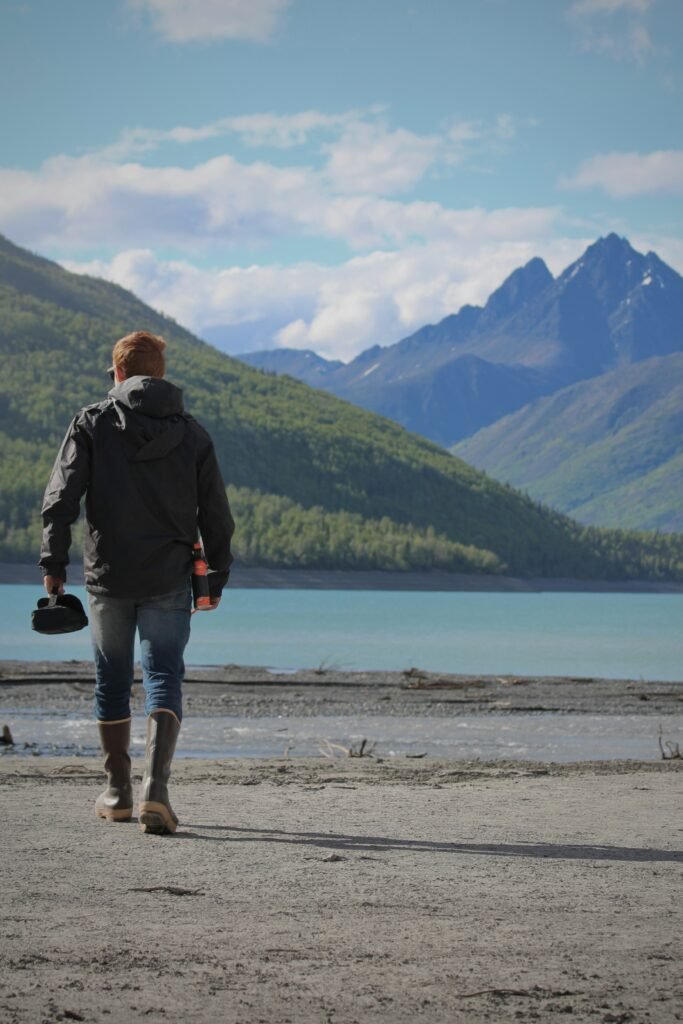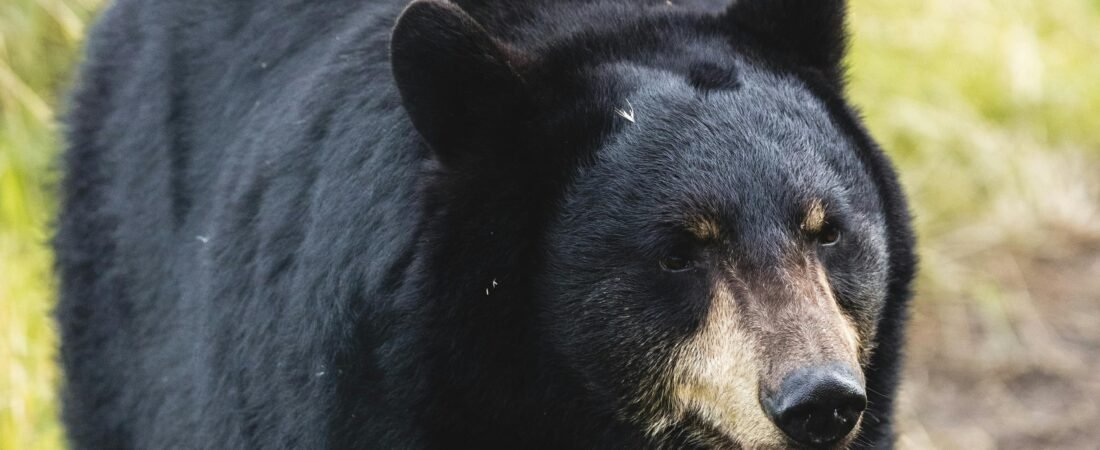Last updated: July 2025
What Every Hiker Should Know About Bear Encounters
Hiking through bear country is both awe-inspiring and a little nerve-wracking—and that’s a good thing. A healthy dose of caution is exactly what you need when sharing the wilderness with these powerful animals. Whether you’re hiking in the Rockies, the Pacific Northwest, or parts of Appalachia, hiking bear safety should be part of your trail prep.
In this guide, we’ll cover how to avoid bears, what to do if you encounter one, and the essential gear to carry when hiking in bear country, including how to use bear spray effectively.
Table of Contents
*This post may contain affiliate links. If you use them, I may earn a small commission at no extra cost to you.
Know Your Bears: Black vs. Grizzly
Before you hit the trail, it helps to know which bears you’re dealing with. The two most common in North America are:
- Black bears: Found in most U.S. states. Generally shy, curious, and less aggressive.
- Grizzly bears (brown bears): Found mostly in the Northern Rockies, Canada, and Alaska. More territorial and powerful.
Pro tip: Don’t assume color tells the species—some black bears are brown, cinnamon, or even blonde.
Read more on U.S. National Park Service website on bear identification.
1. Make Noise to Avoid Surprise Encounters
Bears usually don’t want anything to do with you. Most encounters happen because the bear didn’t hear you coming. You can prevent this with a little noise.
How to do it:
- Talk, sing, or clap regularly—especially near creeks or blind corners.
- Hike in groups whenever possible.
- Consider bear bells, but your voice is more effective.
Personal tip: I once rounded a bend quietly and saw a bear 15 feet away. Since then, I hum constantly or chat with my hiking buddy to alert wildlife ahead of time.
2. Carry Bear Spray (and Know How to Use It)
This is your #1 defense in a worst-case scenario. Bear spray hiking isn’t optional in grizzly country—it’s essential.
What is bear spray?
A high-powered pepper spray designed to deter charging bears without harming them.
How to carry it:
- On your hip, chest harness, or shoulder strap—not inside your backpack.
- Quick access is key; you may have seconds to react.
How to use bear spray:
- Remove the safety clip.
- Aim slightly downward (toward the bear’s face if charging).
- Spray in short bursts when the bear is within 30–60 feet.
- Back away slowly after spraying.
Recommended options:
- Counter Assault Bear Deterrent – trusted by backcountry rangers.
- UDAP Bear Spray – easy-to-use trigger and safety mechanism.
3. Store Food and Smellables Properly
This is one of the golden rules of hiking in bear country: if it smells tasty to you, it smells even better to a bear.
Follow these steps:
- Use a bear canister or bear hang to store food overnight.
- Keep food, trash, toothpaste, deodorant, and wrappers 100+ feet from your sleeping area.
- Never keep food in your tent.
Recommended gear:
- UDAP Bear-Resistant Container
- Ursack Major XL Bear Bag
- Sea to Summit Dry Sack + Paracord for DIY bear hangs
Read an earlier article on how to carry and store food while hiking.
4. Know What to Do If You See a Bear
If you spot a bear, your next move depends on what it’s doing.
If the bear hasn’t seen you:
- Stay calm and quiet.
- Slowly back away the way you came.
If the bear notices you:
- Speak calmly (“Hey bear…”) and wave your arms slowly.
- Don’t run—this can trigger a chase.
- Make yourself look larger by standing tall or stepping onto a rock.
If the bear approaches:
- Hold your ground.
- Get your bear spray ready.
- If it continues advancing, spray when within range.
If it charges:
- Use your spray confidently.
- Most charges are “bluff charges”—don’t panic or run.

5. Understand Bear Behavior
Knowing what a bear is doing can help you react appropriately.
Curious or food-conditioned bear:
- Might approach humans looking for snacks.
- This is a serious problem—report to park rangers.
Defensive bear:
- May huff, swat the ground, or bluff charge.
- Likely protecting cubs or food nearby—back away slowly.
Predatory bear (rare):
- Quiet, focused, and stalking behavior.
- If attacked by this type of bear, fight back with everything you’ve got.
For more on bear behaviour in encounters.
6. Camp with Care in Bear Country
Your campsite should be as uninviting to bears as possible.
Bear-safe camping tips:
- Cook and eat away from your tent.
- Store all food and scented items properly.
- Pack out all trash, including crumbs and food wrappers.
- Consider carrying an odor-proof bag like an Opsak for added protection.
7. Gear to Carry When Hiking in Bear Country
Here’s your bear country hiking checklist:
✅ Bear spray (easy access)
✅ Bear-proof food container or hang system
✅ Odor-proof bags for food and toiletries
✅ Trekking poles (extra noise, can be used for defense)
✅ GPS or map (stay on trail to reduce surprise encounters)
✅ First aid kit
✅ Satellite messenger (if going remote)
8. Where and When to Be Extra Cautious
High-risk zones:
- Brushy trails with limited visibility
- Berry patches or animal carcasses
- Areas near streams (noise masks your approach)
Times to watch out:
- Dawn and dusk: Bears are most active.
- Spring & early summer: Females with cubs are highly protective.
- Late summer & fall: Bears are foraging aggressively before hibernation.
Final Thoughts on Bear Safety: Respect, Not Fear
Hiking in bear country doesn’t have to be scary. With the right precautions, it can be just another (incredible) part of your wilderness adventure. Remember: you’re a visitor in their home. Make noise, carry bear spray, and store food smartly—and you’re unlikely to have any problems at all.
And if you do spot a bear at a safe distance? Count yourself lucky. Just give it space, stay calm, and enjoy the wild from afar.
Recommended reading:

Leave a Reply